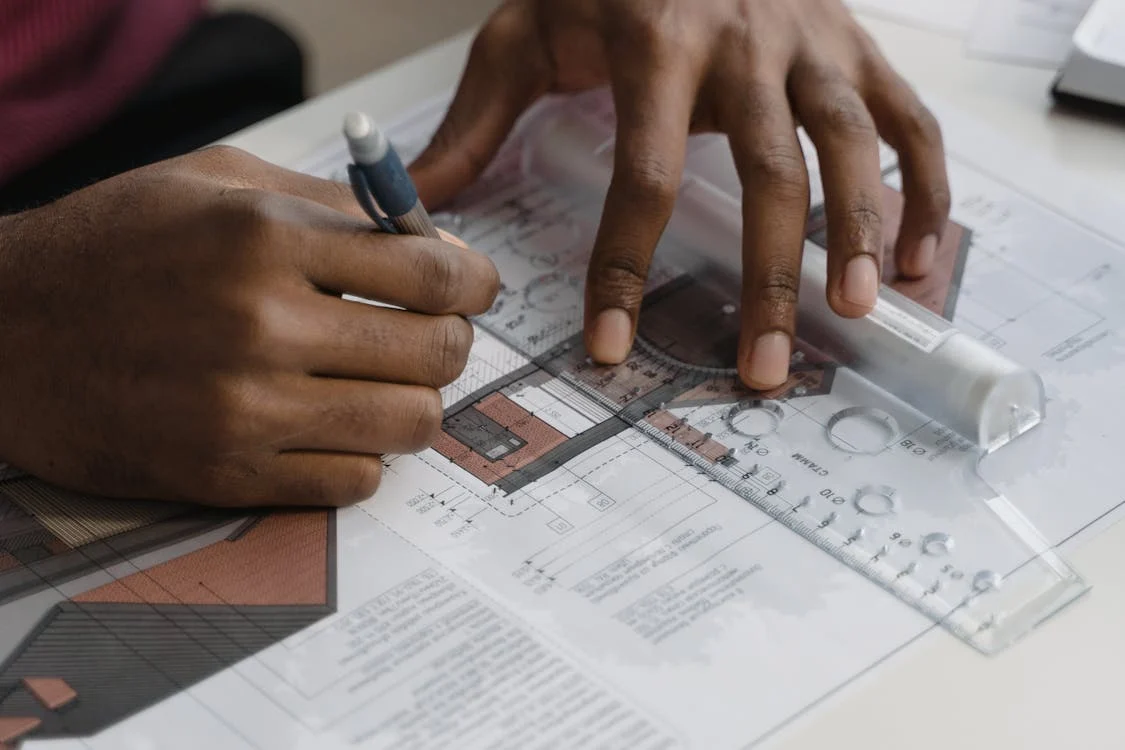
7 Tips to Draft a Plan for Your Home Improvement Project
Undertaking a home improvement project allows you to enhance your living space and potentially increase your home’s value. It’s an exciting process, filled with choices about design, materials, and finishes. However, without a solid plan, what starts as an enthusiastic venture can quickly become a source of stress and financial strain. Effective planning is the cornerstone of any successful renovation, helping to navigate through decisions, manage costs, and achieve the desired aesthetic and functional outcomes.
Understanding the financial aspects of home renovations is crucial from the outset. Costs can vary significantly based on the scale of the project and the quality of materials chosen. For example, homeowners considering a bathroom update must factor in expenses like the cost of new fixtures, faucets, and tub replacement, which can influence the overall budget. This initial step of recognizing potential costs ensures that the project remains realistic and within financial boundaries.
Understand Your End Goal
Before diving into the specifics of your home improvement project, it’s vital to clarify what you hope to achieve. Are you looking to refresh outdated decor and enhance the functionality of your space, or are you aiming for a complete overhaul to increase your property’s market value? Identifying your primary objective guides every decision you make moving forward, from design choices to material selections.
This clarity helps in setting priorities, particularly when budget constraints require compromise. By knowing what matters most, you can allocate funds to areas of the project that will have the most significant impact, ensuring your renovation meets your most important needs and desires.

Create a Detailed Budget
A detailed budget is your roadmap through the financial landscape of a home improvement project. It encompasses more than just the cost of materials and labor; it should also include expenses such as permits, professional fees, and a contingency fund for unforeseen costs. For instance, the tub replacement cost can vary widely, depending on factors like the tub model, installation complexities, and additional features such as jets or a built-in heater.
By accounting for these variables early in the planning process, you can avoid surprises and make informed decisions that keep your project on track. Establishing a comprehensive budget also allows you to explore cost-saving options, whether by selecting alternative materials or adjusting the project scope to better fit your financial limits.
Research and Select Materials
The materials you choose play a pivotal role in both the appearance and cost of your home improvement project. With an array of options available, from eco-friendly paints to luxury flooring, selecting materials that align with your design vision and budget requires thorough research. This step is not just about aesthetics; durability, maintenance, and environmental impact are also crucial considerations.
Engaging with suppliers, visiting showrooms, and consulting with professionals can provide valuable insights, helping you to discover materials that offer the best balance of quality and value. Whether you’re updating a kitchen backsplash or replacing a bathtub, the right materials can significantly influence the project’s final look, feel, and functionality.
Hire the Right Professionals
Once you’ve established your goals and budget and selected your materials, finding the right professionals to bring your vision to life is crucial. The expertise of skilled contractors, designers, and specialists can significantly influence the success of your project. Their knowledge and experience ensure that your renovation not only meets your expectations but is also compliant with local building codes and regulations.
Start by seeking recommendations from friends or online reviews, then interview potential candidates to gauge their understanding of your project and ensure they share your vision. Verify their credentials, experience, and insurance to ensure you’re hiring reputable professionals. Remember, the cheapest quote may not always lead to the best outcome. Quality workmanship, reliability, and a good communication style are invaluable traits that often justify a higher initial cost.
Plan for Permits and Approvals
Navigating the bureaucratic landscape of permits and approvals is a step many homeowners find daunting. Yet, it’s a necessary part of the planning process to ensure your renovation is legal and up to code. Depending on the scale of your project, you may need various permits from your local city or county office.
Consult with your hired professionals, as they can often provide guidance on what’s required or, in some cases, handle the permit application process for you. Planning for this early on helps prevent delays and ensures that all work is done legally and safely, protecting your investment in the long run.

Embrace Flexibility and Adaptability
For home improvement projects, adopting a flexible and adaptable mindset can be just as crucial as any physical aspect of the project. While detailed planning is essential, the ability to pivot and adjust your plans in response to unforeseen circumstances or new insights can make the difference between a project that feels like a compromise and one that truly exceeds your expectations.
For instance, during the renovation process, you might discover an opportunity to incorporate an innovative solution or design feature that wasn’t initially considered. Being open to such possibilities can enhance the outcome of your project. Similarly, supply chain issues might necessitate a change in materials or timelines. Viewing these challenges as opportunities to reassess and perhaps improve upon your original plans can lead to surprising and satisfying results. This approach ensures that your home improvement project remains dynamic and responsive, ultimately aligning more closely with your vision and needs.
Prepare for the Unexpected
Even with the most meticulous planning, home improvement projects can encounter unforeseen challenges. Whether it’s a delay in material delivery, discovery of hidden problems once the work begins, or a sudden change in your circumstances, flexibility is key. Allocating a contingency fund within your budget can alleviate financial stress, allowing you to address issues without compromising other aspects of the project.
Anticipate making adjustments and maintain open lines of communication with your team. Regular check-ins and being involved in the process enable you to make informed decisions quickly, keeping your project moving forward despite any hiccups.
Conclusion
Drafting a comprehensive plan for your home improvement project is a multifaceted process that involves clear goal setting, meticulous budgeting, careful material selection, hiring the right professionals, understanding the necessity of permits, and preparing for the unexpected. This blueprint is your guide through the renovation journey, helping to ensure that your project is completed on time, within budget, and to your satisfaction. By adhering to these tips, you’re not just planning a renovation; you’re setting the stage for a successful transformation of your space. Remember, the goal is to enhance your home in a way that aligns with your lifestyle and preferences, creating a space that you’ll enjoy for years to come.




